Sarah Roy, a Harvard political scientist and an authority on Palestine, presents a personal account of how Israel has punished Gaza year after year for over half a century, turning it from a functioning economy to an impovershed and dysfunctional one. The original account can be found here.
The Long War on Gaza
POSTED ON | SARA ROY | THE NEW YORK REVIEW OF BOOKS
SOURCE
Over fifty-six years, Israel has transformed Gaza from a functional economy to a dysfunctional one, from a productive society to an impoverished one.
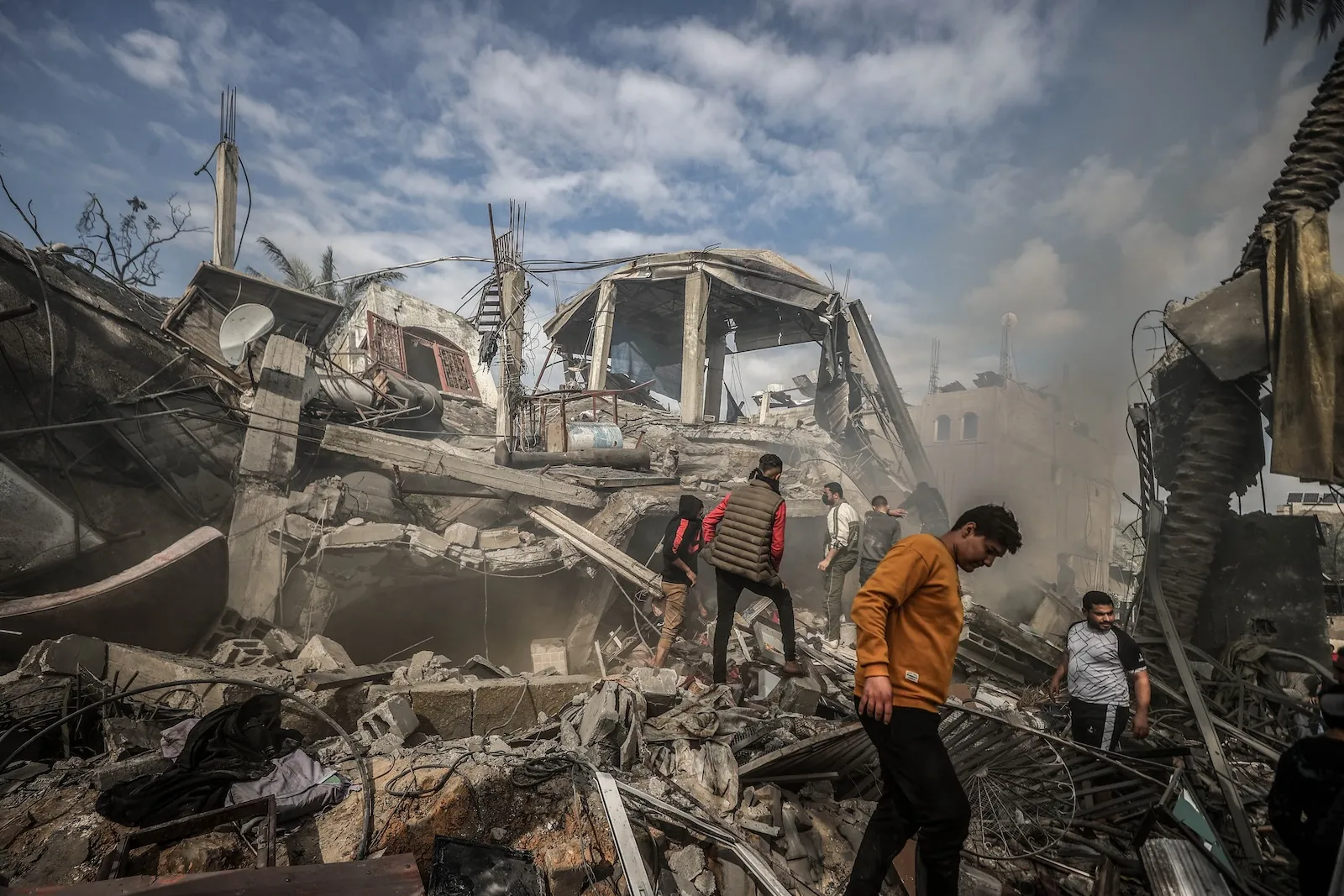
Gaza is being devastated as we watch. A stated goal of Israel’s assault, which has so far killed more than 19,400 people, is to “destroy Hamas” in retaliation for its attack that killed 1,200 in Israel’s south in October. But a number of critics, such as the Palestinian ambassador to the UK, Husam Zomlot, have argued persuasively that Israel’s goal is less to vanquish Hamas—impossible in any case—than to finally expel Palestinians from Gaza without international censure or sanction.[1]
There is mounting evidence for their claims. In mid-October, Israel’s intelligence ministry drafted a “concept” paper proposing the forcible and permanent transfer of Gaza’s 2.3 million residents to the Sinai Peninsula. The ministry is less influential than its name suggests, but its policy ideas are nonetheless distributed among government and security services. In November a USAID official approached a colleague of mine and asked about the feasibility of building a tent city in the Sinai, which would be followed by a more permanent arrangement somewhere in the northern part of the peninsula. Later that month the daily Israel Hayomrevealed that Prime Minister Benjamin Netanyahu seeks to “reduc[e] the number of Palestinian citizens in the Gaza Strip to the minimum possible.”
The current desecration of Gaza is the latest stage in a process that has taken increasingly violent forms over time [2]. In the fifty-six years since it occupied the Strip in 1967, Israel has transformed Gaza from a territory politically and economically integrated with Israel and the West Bank into an isolated enclave, from a functional economy to a dysfunctional one, from a productive society to an impoverished one. It has likewise removed Gaza’s residents from the sphere of politics, transforming them from a people with a nationalist claim to a population whose majority requires some form of humanitarian aid to sustain themselves.
Violence in Gaza has not only or even primarily been a military matter, as it is now. It has been a matter of everyday, ordinary acts: the struggle to access water and electricity, feed one’s children, find a job, get to school safely, reach a hospital, even bury a loved one. For decades the pressure on Palestinians in Gaza has been immense and unrelenting. The damage it has done—high levels of unemployment and poverty, widespread infrastructural destruction, and environmental degradation, including dangerous contamination of water and soil, among other factors—has become a permanent condition.
I first visited Gaza as a graduate student in 1985. Right away I fell in love with the locals, who embraced me as a Jew, an American, and a woman. In those early days one of the first questions I was typically asked was “Are you a Christian?” When people learned I was Jewish
there was some initial shock and confusion but also curiosity. Once I explained I was there to learn about their society and economy and how the occupation affected their lives, it didn’t take long to gain their trust. In fact, being Jewish became an asset: people who barely knew me invited me into their homes and businesses. Many of them would later help me collect data when I lived in Gaza during the first intifada, or uprising, which began in 1987.[3]
I had a great deal to learn, but it was clear from the outset that Gaza had historically been the center of Palestinian resistance to the occupation, a point of pride for those I worked and lived with. It has also long been the center of Palestinian historical memory. The vast majority of residents come from families who were ethnically cleansed in 1948 from such places as Isdud, al-Majdal, and al-Faluja. Some of my earliest memories from Gaza are of young refugee children describing in great detail the homes and villages that their grandparents had lived in but that they had never seen. They were strikingly intimate with their ancestral homes. I remember the delight they took in their descriptive power and the self-esteem it gave them.
Israel has never known what to do with this tiny strip of land. From the beginning of the occupation, the country’s leaders recognized that Gaza would have to be pacified to preclude the creation of a Palestinian state—their primary objective—and minimize Palestinian resistance were they to annex the West Bank. During the first two decades of the occupation, from the six-day war of 1967 to the start of the first intifada, their preferred tactic was controlling Gaza’s economy. Over 100,000 Palestinians from Gaza and the West Bank worked inside Israel. Taken together, the territories were Israel’s second largest export market after the US, and they came to depend heavily on Israel for employment and trade. The result was a combination of individual prosperity—standards of living improved—and communal stagnation. Gaza’s own productive sectors—including manufacturing and agriculture—received little investment, which precluded development.
The first intifada made it clear that this strategy of pacification had failed. Improved living standards could no longer compensate for the absence of freedom. With the 1993 Oslo Accords, which marked the end of the first intifada, Israeli policy gradually shifted from regulating Gaza’s economy to attenuating and then disabling it by prohibiting more conventional trade and the movement of workers between Gaza and its primary markets in Israel and the West Bank. This strategy is often said to have begun in 2007, when Hamas, having defeated Fatah in the previous year’s legislative elections, took control of Gaza. That year Israel imposed a blockade that severely limited both trade with Gaza and the entry of specific food products into the Strip. But the blockade—now in its seventeenth year—is only a more extreme form of measures that were already in place.
Early in 1991—before Hamas started launching rockets and orchestrating suicide bombings—Israel began restricting and periodically blocking the movement of workers to and from Gaza, as well as the trade upon which its small economy disproportionately depended. Initially the aim was to contain and suppress unrest. But as the Israeli journalist Amira Hass has written, it “soon developed into something more far-reaching.”[4] In January 1991 Israel canceled the general exit permit that made it possible for Palestinians to move freely through Israel, the West Bank, and Gaza. Palestinians were thereafter required to secure individual permits in order to leave Gaza or the West Bank, even to travel from one to the other. Over time these permits were subject to increasingly strict political and security criteria. “The Gulf War,” Hass wrote, provided the occasion to reverse [the] situation of free movement for the many and prohibition for the few. From then on, there was a blanket denial of the right for all Palestinians, with exceptions being made for certain explicit categories—including workers, merchants, people in need of medical treatment, collaborators, and important Palestinian personalities.
The cancellation of the general exit permit marked the start of Israel’s closure policy. After a series of attacks inside Israel in 1993, “the military commander issued another order canceling the personal exit permits,” according to HaMoked, an Israeli-based human rights NGO assisting Palestinians. “In practice, this order, which has been continuously renewed, established the ‘general closure’ of the Territories in effect to this day.” As B’Tselem, another rights group focused on the West Bank and Gaza, has put it, “Isolating Gaza from the rest of the world, including separating it from the West Bank, is part of a longstanding Israeli policy.”
This policy of separation and containment became more explicit in the aftermath of the Oslo Accords. In 1994 Israel built a fence around Gaza, the first of several enclosures. When the second intifada broke out in 2000, travel restrictions were placed on Gazans, including students, who were banned from pursuing higher education in the West Bank. “Entry of Gaza residents into Israel for the purpose of family visits or reunification with a spouse was prohibited,” in B’Tselem’s words.
Visits by Palestinian citizens of Israel and residents of East Jerusalem to relatives in Gaza were reduced to a minimum. In addition, Israel severely restricted the ability of the entire population of Gaza to travel abroad, with many prohibited from doing so altogether. Import and export were restricted and often halted. Israel also banned most Gaza residents from working inside Israel, taking away the source of income of tens of thousands.
In 2005 Israel “disengaged” from the Strip, removing all of its settlements and military forces. Israeli officials have since argued that this formally ended the country’s occupation of Gaza. According to international law, however, Israel remains an occupier, as it maintains “effective control” over Gaza’s borders (except for Rafah, which Egypt controls), sea access, airspace, and population registry [5]. Over time it grew more difficult both for policymakers to envision a political settlement that would treat the Gaza Strip and the West Bank as a single entity and for Palestinians themselves to imagine a collective future.
Another crucial effect of Israeli policy—more noticeable after Hamas came to power in 2007—was to transform the occupation from a political and legal issue with international legitimacy into a dispute over borders to which the rules of armed conflict apply. Israel in effect recast its relationship with Gaza from occupation to warfare, as evidenced by the numerous deadly assaults it launched on the territory over the past seventeen years—among them Operation Summer Rains (2006), Operation Hot Winter (2008), Operation Cast Lead (2008-09), Operation Pillar of Defense (2012), Operation Protective Edge (2014), Operation Guardian of the Walls (2021), Operation Breaking Dawn (2022), and Operation Shield and Arrow (2023). Its international allies quickly accepted this shift: Gaza came to be identified solely with Hamas and treated as a hostile foreign entity.
Under this new approach, Israel dispensed altogether with the notion that Gaza could have a market economy. “As part of their overall embargo plan against Gaza,” US officials wrote from Tel Aviv in November 2008, “Israeli officials have confirmed … on multiple occasions that they intend to keep the Gazan economy on the brink of collapse without quite pushing it over the edge.” More specifically, they aimed to keep it “functioning at the lowest level possible consistent with avoiding a humanitarian crisis.”[6] The goal, that is, was not to elevate people above a specific humanitarian standard but to ensure they stayed at or even below that standard.
Since 2010, Israel has periodically eased restrictions, but the blockade has nonetheless almost entirely destroyed Gaza’s economy. On the eve of the current conflict, unemployment was at 46.4 percent. (In 2000, before the blockade, it was at 18.9 percent.) Approximately 65 percent of the population was food-insecure, meaning they could not safely access enough nutritious food to meet their dietary needs, while 80 percent required some form
of international assistance to feed their families.
Perhaps the most striking result of this policy was the transformation of the Palestinians in Gaza from a community with national, political, and economic rights into a humanitarian problem. The needs of over two million people were reduced to sacks of flour, rice, and sugar— assistance for which the international community was, and remains, entirely responsible. Gaza could only experience relief, not progress. Humanitarianism has since become the primary way that international donors interact with Palestinians in Gaza—in effect, a device the Israeli military uses to manage an undesirable population, with no vision of anything but more management. “The West Bank and Gaza
are now almost completely delinked,” a World Bank report stated in 2008, “with Gaza starkly transforming from a potential trade route to a walled hub of humanitarian donations.”
Israel has, in other words, created a humanitarian problem to manage a political problem. It not only compelled humanitarian intervention but transformed ordinary life into war by other means, using the threat of catastrophe as a form of governance and suffering as an instrument of control. Until recently the goal was to avert a large-scale disaster such as starvation.
Now that goal has been superceded. For the past ten weeks, with the exception of a one-week “humanitarian pause,” Gaza has been under a total siege; Israel has virtually halted the entry of fuel and restricted the entry of food, among other critical necessities. Palestinians who refused to relocate to the southern part of the Strip after warnings by the Israeli military early in the assault were told that they “might be identified as an accomplice in a terrorist organization.” The metric has changed from starvation to death. “I’m still alive” is the measure by which my friends in Gaza live.
In Gaza, where the overwhelming majority of the population is confined to a tiny strip of land that they are not allowed to leave, the occupation has prevented any kind of normal social environment from emerging. Young people, who account for over half the population, have no conception of the world beyond the Strip. They do not know what it means to board a plane or a ship or even a train. During my last trip to Gaza in 2016, a friend and colleague told me:
People are afraid to enter the world, or they enter it defensively with weapons. Our openness to the world is narrowing, and more and more people are afraid of leaving Gaza because they do not know how to cope with the world outside, like a prisoner released from prison after years of confinement.
In Gaza, daily life entails a narrowing of space and of one’s certainty in that space as a place to live, as well as a narrowing of desire, expectation, and vision. “Given the immense difficulties of everyday life,” I wrote for The London Review of Books after that 2016 trip, “mundane needs—having enough food, clothing, electricity—exist for many only at the level of aspiration.” Now even the mundane is largely out of reach.
In 1946 Chaim Weizmann, Israel’s first president, addressed the viability of the Zionist project. “The economic absorptive capacity of a country is what its population makes it,” he said.
Natural conditions, area fertility, climate will exercise their influence . . . but by themselves they can give no indication of the number of inhabitants which the country can ultimately sustain. Ultimate results will depend on whether a people is educated and intelligent…whether its social system does or does not encourage the widest expansion of economic effort; whether intelligent use is made of natural resources; and finally—and in very high degree—on whether the government exerts itself to increase the country’s absorptive capacity or is indifferent to it [7].
These are the very factors—an educated populace, a healthy and empowered economy and society, productive use of natural resources, and indigenous control over the land’s absorptive capacity—that Israel has largely denied Palestinians. Since the beginning of the occupation, that denial has been said to be indefinite or transitional—a condition imposed on Palestinians with the promise of something better on the horizon. I will never forget what a dear friend, the late medical doctor Hatem Abu Ghazaleh, told me on my first trip to Gaza in 1985: “Nothing is more permanent than the temporary.”
Sara Roy is an associate of the Center for Middle Eastern Studies at Harvard University. Her most recent book is Unsilencing Gaza: Reflections on Resistance.
- See also Adam Johnson, “The ‘Hunt for Hamas’ Narrative is Obscuring Israel’s Real Plans for Gaza,” The Nation, December 7, 2023; and Yuval Abraham, “‘A mass assassination factory’: Inside Israel’s calculated bombing of Gaza,” +972 Magazine, November 30, 2023.
- I describe this process at greater length in my books The Gaza Strip: The Political Economy of De-development (Institute for Palestine Studies, 1995; Third edition 2016) and Unsilencing Gaza: Reflections on Resistance (London: Pluto Books, 2021), from which some passages in this essay have been adapted.
- I discuss my early days in Gaza in greater detail in the introduction to my Failing Peace: Gaza and the Palestinian Israeli Conflict (London: Pluto Press, 2007).
- Amira Hass, “Israel’s Closure Policy: An Ineffective Strategy of Containment and Repression,” Journal of Palestine Studies, Vol. 31, No. 3 (Spring 2002). Israel first introduced changes in its policy regarding movement restrictions at the beginning of the intifada in 1988. Gazans, for example, had to obtain a magnetic card in order to travel to Israel.
- Although Egypt controls the Rafah border crossing, Israel nonetheless monitors all movement across it. Since October 7, all humanitarian supplies entering Gaza through Rafah must be inspected by Israel.
- This cable was only made public thanks to WikiLeaks.
- Cited in George T. Abed, “The Economic Viability of a Palestinian State,” Journal of Palestine Studies, No. 2, Vol. 19 (1989/1990).

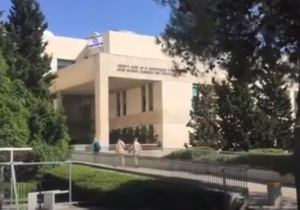
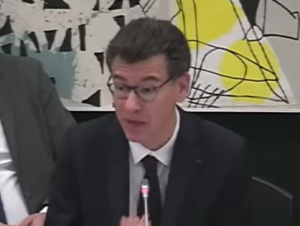
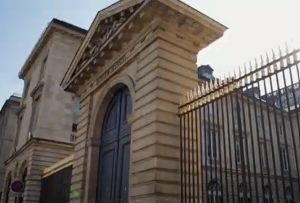

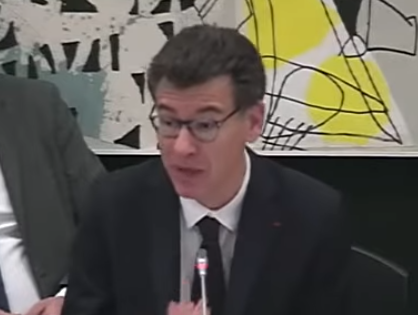
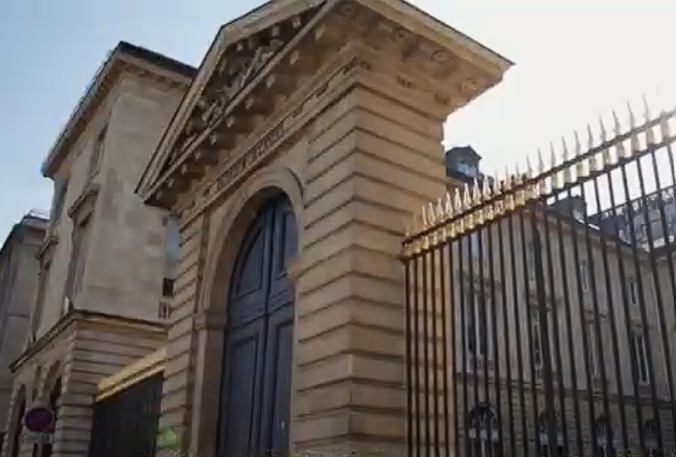

1 ivermectin dosage for dogs: teva ivermectin cream – IverCare Pharmacy
Swerte99 login: Swerte99 – Swerte99 online gaming Pilipinas
Mandiribet: Slot jackpot terbesar Indonesia – Situs judi resmi berlisensi
Jiliko maglaro ng Jiliko online sa Pilipinas jilwin
Situs judi resmi berlisensi: Slot gacor hari ini – Mandiribet
https://pinwinaz.pro/# Qeydiyyat bonusu Pinco casino
Link alternatif Mandiribet: Situs judi online terpercaya Indonesia – Slot jackpot terbesar Indonesia
Dang ky GK88: Khuy?n mai GK88 – Khuy?n mai GK88
Jiliko slots Jiliko casino walang deposit bonus para sa Pinoy Jiliko login
Slot gacor hari ini Mandiribet Mandiribet
Swerte99 app: Swerte99 casino – Swerte99 app
https://swertewin.life/# Swerte99 bonus
Abutogel login: Situs togel online terpercaya – Jackpot togel hari ini
Swerte99 app: Swerte99 – Swerte99 casino
Swerte99 online gaming Pilipinas: Swerte99 casino – Swerte99 app
Swerte99 slots Swerte99 login Swerte99 slots
Swerte99 slots: Swerte99 – Swerte99 login
jilwin: maglaro ng Jiliko online sa Pilipinas – Jiliko
Situs togel online terpercaya Bandar togel resmi Indonesia Link alternatif Abutogel
https://betawinindo.top/# Slot gacor Beta138
Dang ky GK88: GK88 – Casino online GK88
Swerte99 casino: Swerte99 app – Swerte99 casino walang deposit bonus para sa Pinoy
Online gambling platform Jollibet: Online gambling platform Jollibet – Jollibet online sabong
jollibet casino 1winphili jollibet casino
maglaro ng Jiliko online sa Pilipinas: Jiliko app – Jiliko
Situs judi resmi berlisensi: Situs judi resmi berlisensi – Situs judi resmi berlisensi
Promo slot gacor hari ini: Bonus new member 100% Beta138 – Slot gacor Beta138
Casino online GK88: Rút ti?n nhanh GK88 – Slot game d?i thu?ng
Khuy?n mai GK88: Tro choi n? hu GK88 – Casino online GK88
Pinco r?smi sayt Yuks?k RTP slotlar Onlayn rulet v? blackjack
Casino online GK88: Link vao GK88 m?i nh?t – GK88
https://mandiwinindo.site/# Mandiribet login
Situs judi online terpercaya Indonesia Link alternatif Mandiribet Live casino Mandiribet
Link alternatif Abutogel: Jackpot togel hari ini – Bandar togel resmi Indonesia
Link alternatif Beta138: Live casino Indonesia – Bandar bola resmi
Swerte99: Swerte99 casino walang deposit bonus para sa Pinoy – Swerte99
https://gkwinviet.company/# GK88
Swerte99: Swerte99 casino – Swerte99 online gaming Pilipinas
Slot game d?i thu?ng: Ca cu?c tr?c tuy?n GK88 – Dang ky GK88
Jollibet online sabong: Jollibet online sabong – jollibet login
order from mexican pharmacy online Mexican Pharmacy Hub Mexican Pharmacy Hub
mail order pharmacy india: mail order pharmacy india – world pharmacy india
MediDirect USA: MediDirect USA – MediDirect USA
mexican pharmaceuticals online: best mexican online pharmacies – medicine in mexico pharmacies
http://medidirectusa.com/# MediDirect USA
medical mall pharmacy: united states online pharmacy viagra – shopko online pharmacy
Indian Meds One reputable indian online pharmacy top 10 pharmacies in india
pharmacy online australia: MediDirect USA – MediDirect USA
Online medicine order: Indian Meds One – Indian Meds One
Indian Meds One: Indian Meds One – Indian Meds One
how much is viagra at the pharmacy: MediDirect USA – cetirizine pharmacy
pharmacy website india: Indian Meds One – india pharmacy mail order
Indian Meds One п»їlegitimate online pharmacies india Indian Meds One
https://indianmedsone.shop/# Indian Meds One
Indian Meds One: Indian Meds One – Indian Meds One
Indian Meds One: Indian Meds One – Indian Meds One
indianpharmacy com: buy medicines online in india – online shopping pharmacy india
Mexican Pharmacy Hub: get viagra without prescription from mexico – real mexican pharmacy USA shipping
MediDirect USA pantoprazole online pharmacy MediDirect USA
india online pharmacy: Indian Meds One – Indian Meds One
Indian Meds One: pharmacy website india – cheapest online pharmacy india
https://mexicanpharmacyhub.shop/# buying prescription drugs in mexico
top 10 online pharmacy in india: india online pharmacy – buy prescription drugs from india
buy medicines online in india п»їlegitimate online pharmacies india top online pharmacy india
MediDirect USA: MediDirect USA – MediDirect USA
Indian Meds One: indianpharmacy com – Indian Meds One
imiquimod cream online pharmacy: MediDirect USA – doxycycline hyclate online pharmacy
Indian Meds One: buy prescription drugs from india – Indian Meds One
Indian Meds One: Indian Meds One – india pharmacy mail order
india online pharmacy mail order pharmacy india Indian Meds One
amoxicillin mexico online pharmacy: order kamagra from mexican pharmacy – buy modafinil from mexico no rx
http://mexicanpharmacyhub.com/# Mexican Pharmacy Hub
Mexican Pharmacy Hub: buying prescription drugs in mexico online – Mexican Pharmacy Hub
reputable indian pharmacies: indian pharmacies safe – best india pharmacy
pharmacy rx one viagra: MediDirect USA – giant eagle pharmacy hours
Indian Meds One Online medicine home delivery Indian Meds One
Indian Meds One: online shopping pharmacy india – top online pharmacy india
buy antibiotics from mexico: legit mexican pharmacy without prescription – Mexican Pharmacy Hub
rx pharmacy near me: online pharmacy xenical – shopko pharmacy
http://medidirectusa.com/# MediDirect USA
doctor prescription MediDirect USA us pharmacy cialis
Artane: pharmacy direct gb propecia – MediDirect USA
MediDirect USA: MediDirect USA – viagra online pharmacy uk
best online pharmacy india: indian pharmacies safe – india pharmacy mail order
SildenaPeak: sildenafil india price – SildenaPeak
Tadalify: Tadalify – Tadalify
Kamagra reviews from US customers: Safe access to generic ED medication – Kamagra reviews from US customers
SildenaPeak viagra generic canada price viagra 50 mg for sale
http://kamameds.com/# Fast-acting ED solution with discreet packaging
sildenafil 100 coupon: viagra buy uk online – generic viagra price in india
cialis walmart: Tadalify – Tadalify
SildenaPeak female viagra online pharmacy viagra over the counter price
cialis genetic: tadalafil prescribing information – sildenafil vs cialis
KamaMeds: Men’s sexual health solutions online – Online sources for Kamagra in the United States
Compare Kamagra with branded alternatives: Sildenafil oral jelly fast absorption effect – KamaMeds
https://sildenapeak.com/# SildenaPeak
SildenaPeak buy viagra mexico female viagra pills australia
Kamagra oral jelly USA availability: KamaMeds – ED treatment without doctor visits
SildenaPeak: SildenaPeak – buy viagra uk paypal
KamaMeds: Men’s sexual health solutions online – Safe access to generic ED medication
generic tadalafil cost: cheap cialis by post – 20 mg tadalafil best price
Tadalify buy cialis in canada cialis w/o perscription
Kamagra reviews from US customers: Compare Kamagra with branded alternatives – Sildenafil oral jelly fast absorption effect
ED treatment without doctor visits: Kamagra reviews from US customers – Fast-acting ED solution with discreet packaging
https://sildenapeak.shop/# SildenaPeak
where to buy viagra in australia: female viagra pills price in india – SildenaPeak
SildenaPeak buy sildenafil 20 mg online viagra generic discount
over the counter cialis: Tadalify – special sales on cialis
Tadalify: buy cialis on line – Tadalify
Men’s sexual health solutions online: Affordable sildenafil citrate tablets for men – Safe access to generic ED medication
viagra online purchase in india where can i buy sildenafil 100mg 20 mg viagra daily
Tadalify: cialis dosage for ed – cialis tadalafil tablets
https://sildenapeak.shop/# sildenafil 100mg price australia
Compare Kamagra with branded alternatives: Safe access to generic ED medication – Fast-acting ED solution with discreet packaging
cialis coupon walgreens: cialis and alcohol – best price on generic tadalafil
generic cialis online pharmacy Tadalify Tadalify
SildenaPeak: sildenafil online prescription – 200 mg viagra
sildenafil drug: SildenaPeak – SildenaPeak
viagra for women: viagra 200mg tablets – SildenaPeak
http://kamameds.com/# Safe access to generic ED medication
SildenaPeak viagra pills cheap online SildenaPeak
what is cialis for: Tadalify – how to buy tadalafil
SildenaPeak: SildenaPeak – can you purchase viagra over the counter
SildenaPeak: order viagra online singapore – SildenaPeak
cialis after prostate surgery Tadalify cheap t jet 60 cialis online
Affordable sildenafil citrate tablets for men: Online sources for Kamagra in the United States – Fast-acting ED solution with discreet packaging
price of cialis: Tadalify – Tadalify
http://kamameds.com/# Safe access to generic ED medication
SildenaPeak: SildenaPeak – 400 mg sildenafil
cheap antibiotics: buy antibiotics online safely – buy antibiotics online
TrueMeds: TrueMeds Pharmacy – TrueMeds Pharmacy
ClearMeds cheap antibiotics
https://vitalcorepharm.shop/# VitalCore Pharmacy
https://clearmedspharm.com/# buy antibiotics online for uti
: buy antibiotics online – ClearMeds Pharmacy
TrueMeds: best rogue online pharmacy – TrueMeds
reputable canadian online pharmacy TrueMeds TrueMeds
https://clearmedspharm.com/# ClearMeds
canada drug pharmacy: best mail order pharmacy canada – TrueMeds
https://vitalcorepharm.com/# VitalCore Pharmacy
ed medicine online VitalCore Pharmacy VitalCore Pharmacy
ed medicine online: online ed treatments – VitalCore Pharmacy
https://vitalcorepharm.com/# VitalCore Pharmacy
buy antibiotics online safely: – buy antibiotics
buy antibiotics online safely buy antibiotics online for uti antibiotics over the counter
TrueMeds Pharmacy: safe online pharmacies in canada – TrueMeds
http://clearmedspharm.com/# ClearMeds Pharmacy
https://vitalcorepharm.shop/# VitalCore
cialis canada online pharmacy TrueMeds TrueMeds Pharmacy
canadian pharmacy without prescription: world pharmacy india – TrueMeds
VitalCore: ed online treatment – VitalCore Pharmacy
http://vitalcorepharm.com/# VitalCore Pharmacy
VitalCore Pharmacy VitalCore Pharmacy VitalCore Pharmacy
pharmacie en ligne pas cher: pharmacie en ligne france – Achat mГ©dicament en ligne fiable
kamagra gel oral livraison discrète France: PharmaLibre – kamagra 100 mg prix compétitif en ligne
http://pharmalibrefrance.com/# PharmaLibre France
IntimaPharma France medicament contre la dysfonction erectile Intima Pharma
Blue Pharma: BluePharma France – pilule bleue en ligne
cialis original et générique livraison rapide: tadalafil prix – tadalafil 20 mg en ligne
Intima Pharma Intima Pharma cialis original et generique livraison rapide
cialis original et generique livraison rapide: cialis original et generique livraison rapide – cialis generique pas cher
https://pharmaexpressfrance.shop/# pharmacie en ligne france fiable
kamagra en ligne France sans ordonnance: kamagra en ligne France sans ordonnance – kamagra oral jelly
livraison rapide et confidentielle livraison rapide et confidentielle Blue Pharma
viagra femme: BluePharma France – viagra en ligne France sans ordonnance
https://pharmalibrefrance.shop/# kamagra 100 mg prix competitif en ligne
kamagra en ligne France sans ordonnance commander kamagra en toute confidentialite kamagra en ligne France sans ordonnance
pharmacie en ligne france pas cher: pharmacie en ligne – pharmacie en ligne france fiable
https://pharmalibrefrance.com/# kamagra
http://bluepharmafrance.com/# viagra generique efficace
kamagra gel oral livraison discrete France PharmaLibre France commander kamagra en toute confidentialite
Pharma Libre: Pharma Libre – kamagra oral jelly
https://bluepharmafrance.shop/# livraison rapide et confidentielle
kratonbet login: kratonbet link – kratonbet alternatif
bataraslot 88 batara88 bataraslot alternatif